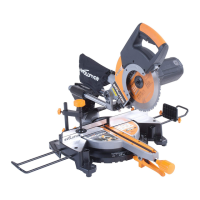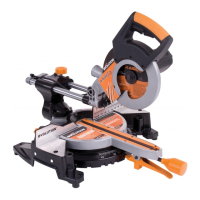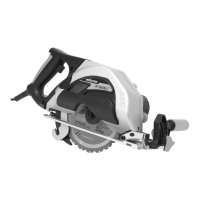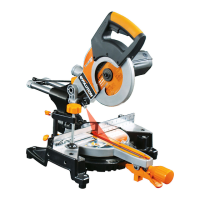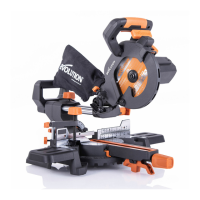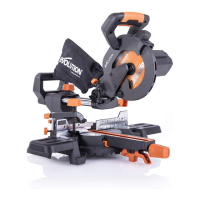14
www.evolutionpowertools.com
ASSEMBLY
To assemble this saw you will need: Cross head screwdriver, 8mm & 10mm spanner or socket wrench,
13mm Socket wrench, 5mm allen key and a rubber mallet.
Note: This process can be considerably aided by studying the images of the assembled machine and the
components found on the machine overview & what’s in the box pages. Unpack all components including
xings and familiarise yourself with them before attempting to assemble the machine. Enlist competent
help when assembling this machine. Use the rubber mallet to aid assembly.
THE BUILD PROCESS:
WARNING: This machine is heavy. Enlist competent help when moving or lifting this machine.
Step 1
• Invert the main body of the machine and place on a clean, secure and sturdy workbench or similar (Fig. 1).
• Select the two components labelled 1.
• Attach the two components to the machines main body using xings B and L (Fig. 2).
• Select the two end caps labelled O and push them into the angled ends of the components.
• Select two end caps labelled N and push them into the straight ends of the components.
Step 2
• Select the components labelled 2 and 3. Attach 2 to 3 using the xings C and M (Fig. 3) .
Step 3
• Select the components labelled 3 and 4.
• Attach component 4 to 3 using the xings labelled A, J and K. Do not over tighten. Repeat on the
other side. (Fig. 4). Note the position of the spacers J which are required to provide the necessary
clearance for the frame to operate.
• Ensure that component 4 is the right way round and that the latch on component 3 engages the
latching pin on component 4 correctly (Fig. 5).
• Select two end caps labelled N and push them into the ends of component 3.
Step 4
• Attach component 4 in its service position on the machine. See that the position of the latching lever
and pin is on the same side as the rise and fall/bevel adjustment hand wheel. (Fig. 6) .
• Use xings labelled A, J and K ensuring that the spacer J is correctly positioned to provide the
necessary clearance for the frame to operate. Do not overtighten.
• Repeat on the other side. (Fig. 7).
Step 5
• Select the components labelled 5 and 6. Attach component 5 to 6 using the xings labelled D and M
(Fig. 8).
• Select the remaining two end caps labelled N and push them into the straight ends of component 6.
Step 6
• Attach component 3 to the rest of the leg assembly using the remaining xings labelled
A, J and K (Fig. 9). It may help to move component 4 out of the way.
• Manoeuvre component 3 and 6 so the bolt holes line up. (Fig. 10).
Step 7
• Attach the wheels 7 to their service position on component 3 (Fig. 11). Do not over tighten the
wheels, as this will prevent them from moving freely.
• Enlist competent help in turning the table saw over. The stand assembly is now complete (Fig. 12).
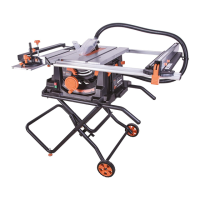
